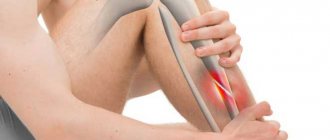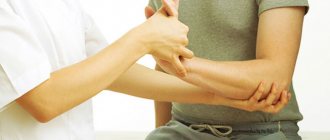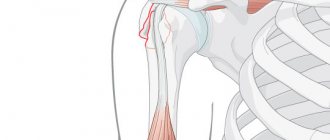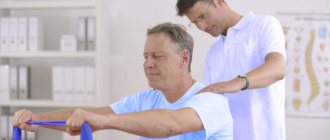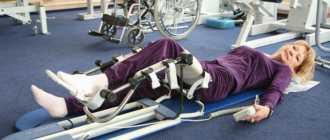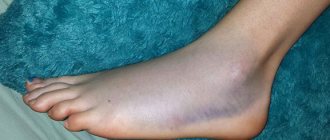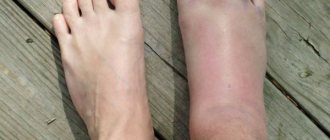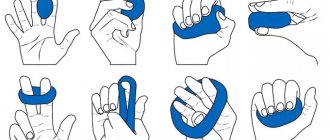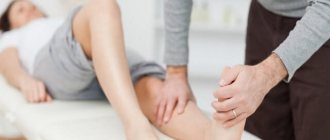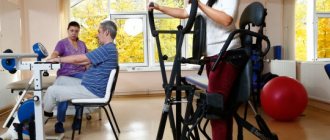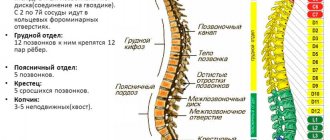Greetings, dear friends! In this article we will tell you about rehabilitation after fractures, and specifically about what physical methods and natural factors are used in the resort and what impact they have. Popular balneological resorts where you can undergo effective recovery after fractures are Jáchymov, Teplice, Hajduszoboszlo, Heviz, Pyatigorsk, Belokurikha, Druskininkai and Birštonas. Here, the treatment is based on the use of natural factors such as mineral waters and mud, as well as various physical rehabilitation methods. On the portal sanatoriums.com you can find other similar resorts using the filter by disease.
Fracture syndromes and the first steps to eliminate them in a resort setting
It is known that a fracture is damage to bones with a violation of their integrity. Fractures can be open or closed. Fractures are accompanied by pain, osteodestructive, edematous and fibrodestructive syndromes, as well as metabolic disorders. The initial and most important goal is to restore bone integrity with maximum preservation of limb function, restore joints and surrounding soft tissue through adequate pain relief, preserve or reduce bone fragments, and prevent wound infection. All this can be done through surgical treatment, limb immobilization or osteosynthesis and, of course, it depends on the type of fracture and its complexity. Rehabilitation in a resort is carried out after surgical treatment and mobilization, which makes it possible not only to restore the functions of the limbs, but also to deal with complications that arise after surgical treatment.
Sanatorium
Tour
Flights
Transfers
Recovery after a displaced leg fracture
The most complex type of fracture is the displacement of bone fragments. In this case, restoration of their physiological position is required. The Elizarov apparatus is often used for these purposes.
Recovery from a displaced leg fracture requires the use of different techniques. Most often, muscle recovery after a leg fracture begins with the use of the following methods:
- electromyostimulation – accelerates the process of restoring microcirculation of blood and lymphatic fluid, enhances trophism and increases tone;
- massage improves the degree of elasticity of muscle tissue, increases the permeability of the cell membrane, accelerates the process of increasing the mass of myocytes;
- physiotherapy prevents the process of scar tissue formation.
The following techniques can also be used to recover from a broken leg:
- kinesiotherapy - allows you to increase the amplitude of limb mobility, trigger the processes of involution of scar tissue, etc.;
- reflexology – starts the process of regeneration of all damaged tissues in the human body;
- osteopathy restores the flow of blood and lymphatic fluid;
- laser exposure ensures mobility of all joints;
- Therapeutic gymnastics enhances muscle tone and prevents the development of negative processes in the area of the affected area of bone tissue.
If you need recovery from a broken leg in a cast, you can schedule a free consultation with a podiatrist at our chiropractic clinic. Here you will be provided with comprehensive information about the techniques used and their effectiveness in your individual case.
Indications and contraindications for sanatorium-resort rehabilitation after a fracture
For patients after a fracture of the torso, limbs, fractures with delayed consolidation, with painful callus, as well as those who have joint stiffness after surgical treatment associated with the presence of contractures or bone fusion, sanatorium treatment is indicated after 4-5 months. Patients are sent to balneological resorts rich in radon, nitrogen-siliceous thermal and sodium chloride waters, as well as to mud resorts. The main contraindication is the patient’s inability to move independently.
How to properly develop a leg after a fracture
Before developing a leg after a fracture, you need to make sure that the callus is fully formed and strengthened. To do this, you need to take a control x-ray. He needs to visit an orthopedic doctor, who will develop an individual program on how to quickly develop a leg after a fracture. It will contain a set of gymnastic exercises that the patient can subsequently perform independently at home.
However, it is better to begin rehabilitation under the supervision of a specialist. There are several ways to properly develop a leg after a fracture; among their positive results, manual therapy, osteopathy, kinesiotherapy and physiotherapy stand out. Later in the article we will talk about each of the methods separately.
In the meantime, a few words about how to develop a leg after a foot fracture and completely restore the correct position. The difficulty with fractures of the bones of the foot is that they are very difficult to heal and a rough bone callus can form. It deforms the foot, disrupts the blood supply to the muscle arches, and impedes the passage of nerve fibers. All this causes a lot of trouble for the patient.
Rehabilitation should begin as early as possible. The influence of an osteopath increases blood supply to this area and reduces the risk of the formation of rough callus. Special gymnastics accelerates the process of restoring muscle elasticity. Massage and physiotherapy restore regenerative processes in tissues.
Methods of treatment and rehabilitation after fractures
Methods aimed at eliminating pain include diadynamic therapy, amplipulse therapy and interference therapy, UHF and microwave therapy to relieve inflammation, and therapeutic massage and low-frequency magnetic therapy to eliminate edema. To restore the metabolism and trophism of tissue in the fracture zone, infrared laser therapy is used, which helps fight severe swelling (it can be used as early as the third day after the fracture) and high-frequency magnetic therapy, which has a limitation: it cannot be carried out in the presence of metal structures for metal synthesis in the tissues, as this may cause internal burns. Quite early, 3-5 days after the fracture, thermal techniques are also used, such as paraffin therapy, ozokerite therapy, which are especially effective for persistent edema accompanied by damage to the arteries and nerves.
Patients are prescribed mud applications, in which therapeutic mud at a temperature of 40-42 °C is applied both to the entire damaged limb and, for example, only to the lower leg or forearm, involving the joints of the proximal and distal parts. The procedure lasts from 15 to 30 minutes and is carried out either every other day or two days in a row with breaks on the third; the course of treatment consists of 12-15 procedures.
To reduce muscle paresis, electrical stimulation, diadynamic therapy and amplipulse therapy are used. Electrical stimulation, in turn, is an interesting procedure that is carried out using different methods by applying pulsed current to the motor points of the affected muscle or nerve. The procedure lasts 30-45 minutes and is performed daily or every other day, depending on the level of damage and the severity of atrophy. The course of treatment includes 10-15 procedures; it is recommended to repeat it after 2-4 weeks.
Early rehabilitation
Over the past 10 years, almost 6% of people in our country have suffered a hip fracture. The injury usually occurs in patients with osteoporosis or in the elderly, and injuries are also often reported in athletes or drivers who have been involved in accidents. Such destruction is dangerous due to its complications: tearing of muscles, blood vessels and nerves. Branches of a large artery pass through the thigh area, so life-threatening blood loss is often observed. To exclude relapses, rehabilitation after a displaced femoral fracture should be comprehensive and should be carried out from the first days after surgery.
In the first few weeks the patient is prescribed:
- load on the lungs - to ensure ventilation, the patient, lying in bed, takes deep breaths and exhalations 2-3 times a day;
- medications - prescribed only by a doctor to relieve pain, prevent muscle spasms, improve blood circulation in the affected limb;
- prevention of bedsores - changing the position in bed, raising the sacrum, moderate tension of the muscles of the whole body according to the doctor’s recommendations.
Independent exercises and especially movements of the affected limb are strictly prohibited. Three groups of powerful muscles are concentrated in the hip area, and even small loads can provoke re-injury with displacement. In the early period, the program is aimed at relieving pain and creating favorable conditions for wound healing.
The doctor's consultation
My name is Elena Khorosheva, I am the chief doctor of sanatoriums.com, a pediatrician, physiotherapist and balneologist, candidate of medical sciences, practicing since 2004.
I personally visit the resorts presented on our website, communicate with doctors and study the treatment facilities of sanatoriums and spa hotels in order to give you the most comprehensive and useful advice!
Presentation by doctor Elena Khorosheva
Elena Khorosheva
Chief physician sanatoriums.com
From other countries +420355455981
- Email:
- Skype: doctor.sanatoriums.com
- WhatsApp: +420737459155
- Telegram: 420737459155
- Viber: +420737459155
What are the benefits of massage for a fracture?
The main property of massage for a broken leg is muscle restoration due to increased blood flow and kneading. After removing the cast, a person can expect not only muscle atrophy, but also soft tissue swelling. Massage in this situation helps:
- vasodilation;
- acceleration of blood circulation, which promotes blood supply to tissues;
- restoration of joint mobility;
- eliminating congestion;
- restoration of muscle tone and elasticity.
All this helps restore the patient’s motor activity. Also, such a massage can eliminate swelling of the leg outside of the applied plaster.
to the doctor
If the patient has contracture, he is prescribed ultrasound therapy and peloid therapy. For slowly consolidating callus, false joints, and fractures accompanied by delayed bone healing, patients are prescribed remote shock wave therapy. A contraindication to its implementation is the presence of damage to the capsular-ligamentous apparatus, muscles and ligaments.
It is worth noting that during rehabilitation it is important to do physical exercises - patients are prescribed a gentle or training regimen. The exercises included in therapeutic exercises are prescribed with a range of motion below the pain threshold - these are isothermal, breathing, static exercises with muscle relaxation and tension; exercises for balance, coordination; special exercises to develop all joints; exercises with weights, resistance and static hold of the limbs, as well as against the wall with various sports equipment. Biomechanical simulators are also used in rehabilitation. The total physical activity increases due to its duration and density, depending on the number of exercises and cycles of their repetitions.
In conclusion, I would like to note that there are many methods of treatment and rehabilitation of patients after fractures; they are used differentially depending on how long ago the fracture occurred. The effectiveness of recovery and rehabilitation processes depends on the use and combination of natural factors and physical methods. Please note that before undergoing sanatorium-resort treatment after a fracture, you need to obtain advice and recommendations from your attending orthopedist-traumatologist.
Support
Are you not sure what criteria to use to choose a resort or sanatorium?
Don't know how to book?
Call us and our support staff will help you.
FAQ
Evgeniy Korostelev
Head of Help Desk
Help Desk Presentation
From Germany
+4974328093002
From other countries
+420355455981
The doctor's consultation
Free help from a health resort doctor
If you find it difficult to independently search for a resort and sanatorium that is optimally suited for treating your diseases, then take advantage of a free consultation with a health resort doctor Elena Khorosheva.
Submit your question here
Elena Khorosheva
Chief physician sanatoriums.com
Presentation by doctor Elena Khorosheva
Consequences after a broken leg
The consequences of a broken leg can be different: the circulatory system and lymph flow, nerve fiber, joints, and muscles are affected. As a result of this, a person may experience lameness, a feeling of different lengths of limbs, destruction of large and small joints, development of contractures, etc.
Let's look at the most likely consequences after a broken leg - these are:
- contracture and ankylosis of joints that are immobilized during the application of a plaster cast;
- muscle fiber atrophy and tone disturbance;
- thinning of the cartilage layer inside large joints of the lower extremities (knee, hip and ankle) and the development of osteoarthritis;
- shortening of the ligamentous and tendon apparatus;
- impaired blood flow and development of varicose veins of the lower extremities;
- pinching of the nerve fiber and the occurrence of neuropathy and neuralgia;
- false joint.
Contracture and ankylosis are related conditions. They occur when a peculiar protein, fibrin, begins to be deposited inside the joint. It forms cords that impede the mobility of the joint. Gradually, the joint capsule, ligaments, tendons and muscles are involved in the process. With their secondary deformation, the joint can shamefully lose its mobility. This stage is called contracture.
Muscle atrophy is a natural process when a limb is immobilized; there is no physical impact on the muscles, they do not work and undergo dystrophy due to the lack of sufficient capillary nutrition.
Osteoarthritis of the knee or hip joint after a femur fracture is the most common complication if the rehabilitation period is carried out incorrectly. What is the cartilaginous synovial layer inside a joint? This is a shell consisting of hyaline cartilage. When the joint operates, it contracts and expands in order to properly distribute the shock-absorbing load. At this time, the cartilage tissue is nourished. If the joint is immobilized for a long time, then the cartilaginous canal is not subject to compression and expansion. Its atrophy begins.
After the cast is removed, the patient begins to actively move. Serious physical stress begins to be placed on the thinned synovial cartilaginous membrane. As a result, it disintegrates and exposes areas of bone tissue. Cracks form on them and are filled with osteophytes. This is the stage of development of deforming osteoarthritis. The disease can be treated conservatively only in the first and second stages. In the third stage, the patient can only be helped by endoprosthetic surgery.
Deformation of ligaments and tendons occurs against the background of lack of mobility. This process is part of ankylosis and contracture. It is possible to prevent deformation and shortening of the ligamentous tendon apparatus only with the help of a well-designed rehabilitation course.
Compression of the nerve fiber is a consequence of improper fusion of bone fragments. This complication requires surgical and traumatological care. Help is provided in the same way for false joints. It develops in people who do not follow the recommendations of a traumatologist, who independently remove the cast ahead of time, who drink alcoholic beverages during treatment, etc. A false joint is the formation of a joint capsule around bone fragments. The limb acquires pathological mobility in the area of the fracture.
Performing massage for a hip fracture
With an open fracture or a displaced fracture, hip massage begins after the plaster is removed, and with a closed one, you can start while you are wearing it. The procedure begins from the back with rubbing movements, after which we smoothly move to the thigh. Next, the impact begins with the fingertips and palm on the surface of the thigh. Movements are performed from top to bottom and in a circle.
Do not be alarmed by slight pain or a rush of heat during or after the procedure. This has no consequences and goes away over time. Massage can be performed using decongestant ointments.
Thus, massage for fractures of any part of the leg is a necessary component of a full and rapid recovery. With its help, muscle tone is restored, blood circulation and lymph flow are normalized, and swelling is eliminated.
P.S
The correct rehabilitation scheme helps to avoid the unpleasant consequences of injury:
- flat feet;
- lameness;
- growth of heel spurs;
- curvature of fingers;
- joint contractures.
The recovery period is no less important than proper fixation of bones during treatment. With insufficient persistence in exercise and training, full mobility of the limb can be lost. A timely start, strict adherence to the recommendations of the traumatologist, patience and hard work will help to fully restore motor functions and successfully complete the treatment of a foot fracture.
Top ↑
Stages of rehabilitation
While in a cast, it is necessary to perform exercises for the hip and knee joints to maintain muscle tone and improve blood circulation.
Measures to restore functions must be carried out consistently so as not to overload the limb with excessive loads. The main stages of proper rehabilitation:
- First stage . You need to start recovery by warming up the foot with a massage. Simple steps to knead the legs without using force are suitable for this. The movements are light, kneading and stroking. There is no need to try to walk right away, especially without crutches. This mistake is often encountered during the rehabilitation of patients with a metatarsal fracture of the foot.
- Second phase . During the second stage, you need to connect a specially selected exercise therapy complex, regularly increasing the load. Walking is necessary. It is important to walk correctly right away, avoiding lameness, which can become entrenched in consciousness. It is necessary to train the arch of the foot, the muscles of which have atrophied as a result of immobility.
- Third stage . During the final stage, you cannot stop exercising; you should continue to adhere to your diet and attend physical therapy. During this period, tasks for the development of spring functions are included - small jumps.
The result of the rehabilitation period should be full mobility of the joints, an even gait without lameness. To make movement easier, you should continue to wear arch supports. This is mandatory for the rehabilitation of patients with any location of injury, not excluding a fracture of the fifth metatarsal bone of the foot, which occurs most often.
Performing massage for a broken leg
Massage of the lower leg after a fracture is carried out daily, starting from the second week of rehabilitation. It begins with a light mechanical vibration, which can be carried out longitudinally and transversely through a hole cut in the plaster. During the day, the procedure is repeated two to three times.
Since massage has a reflex effect, the healthy leg should also be massaged. To avoid stiffness of the knee joint, a hole is cut in the cast under the knee to massage this area. Also for these purposes it is necessary to “play” with the kneecap. It is advisable to tense and relax the muscles of the damaged area throughout the day.
